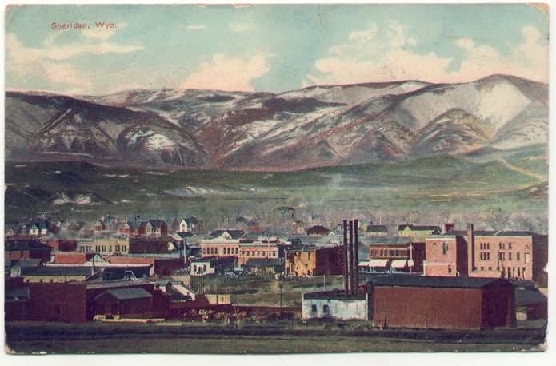
Sheridan, 1908.
With the opening of Northern Wyoming at the end of the Indian Wars, the area of
present day Sheridan was ripe for development and became, as shown in the following
sequence of photos taken from the same location, the scene of rapid growth.
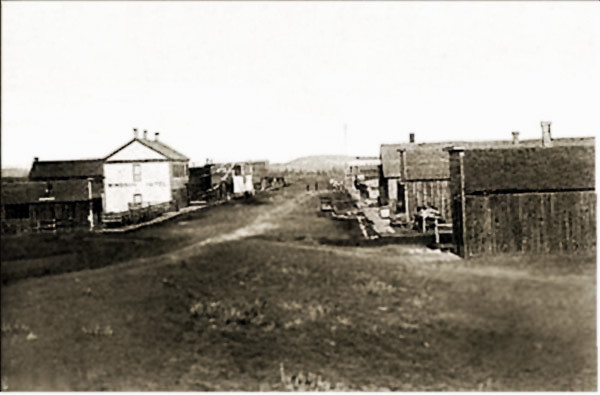
Main Street, looking North toward intersection of Main and Works, 1887
The two-story building in the photo to the
left is the Windsor Hotel operated by Benjamin F. A. Kueny (1842-1907).
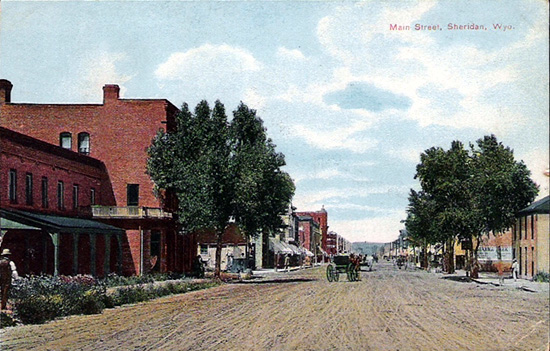
Main Street, looking North toward intersection of Main and Works, prior to 1908.
The first cabin in the area of Sheridan was
constructed in 1878 by Oliver Perry Hanna (1851-1934) at Big Horn to the southwest of
present day Sheridan. Hanna established a farm with Jno. Bennefiel on Goose Creek.
Only two years before Hanna constructed his cabin, the area of
the confluence of Big and Little Goose Creeks was the site of
Gen. George Crook's base camp in the so-called "Horse Meat Campaign." Hanna had been a
soldier with Gen. Crook's forces.
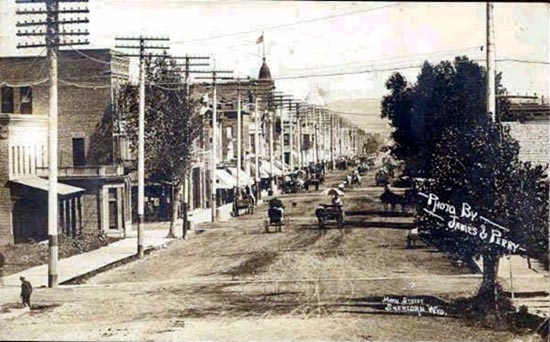
Main Street, looking North toward intersection of Main and Works, 1908. Photo by
James and Perry.
Sheridan was laid out in 1882
on a 40-acre plot by John D. Loucks, who drew the plat on the back of a sheet of wrapping paper. Based on
his drawing, professional surveyors laid out the town, the plat was approved, and
a post office established with Loucks as the first contract postmaster. Loucks' compensation on a commission
basis for the first three months was $13.45. The City was
incorporated two years later in 1884 with Loucks the first mayor. Loucks, a Civil War veteran, named the
City after his old commanding officer. In 1888, Sheridan County was formed from
Johnson County and the city was designated as the seat in a contest with Big Horn and
Dayton.
The railroad arrived in 1892. Coal mining commenced the following
year. By 1900 the city had a population of
over 1500 and by 1910 a population of approximately 12,000. The city
served as the headquarters for John Kendrick's OW ranch which was moved to the area from
Old Woman Creek in present day Niobrara County. Nearby, Malcolm and William
Moncreiffe, established a ranch in order to provide horses for Lord Robert's forces
during the Boer War.
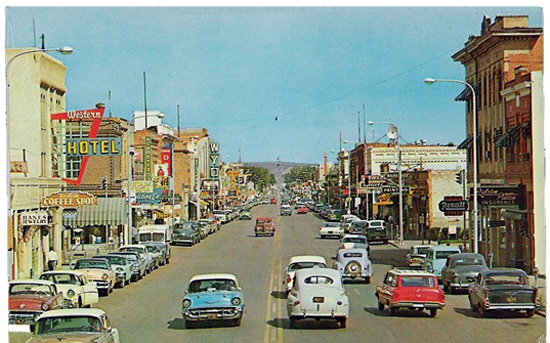
Main Street, looking North toward intersection of Main and Works, approx. 1970.
Many of the streets in the original section of town were named by Loucks for other early
settlers. Works Street is named after James Works, an early cattle drover.
Sheridan Photos continued on next page.
|